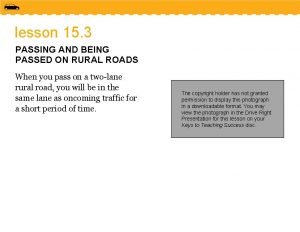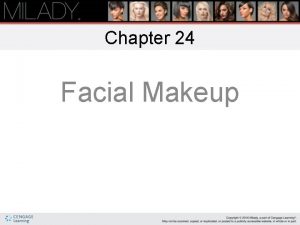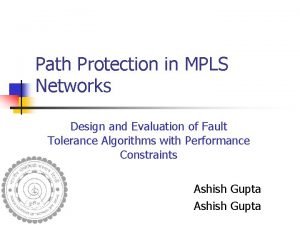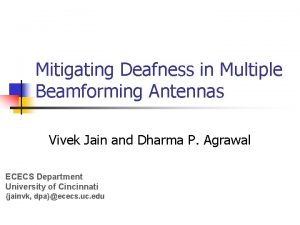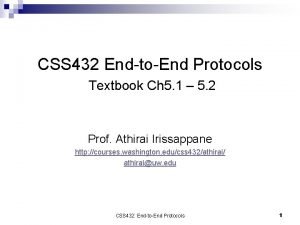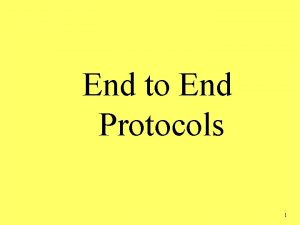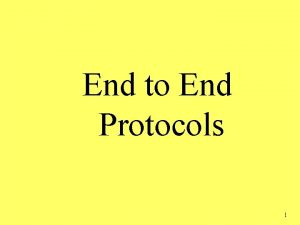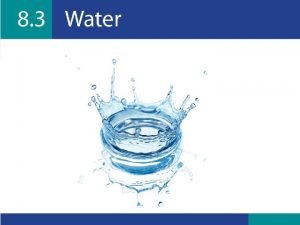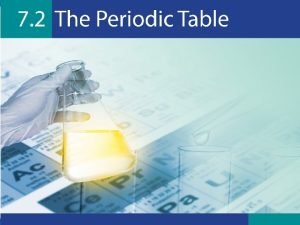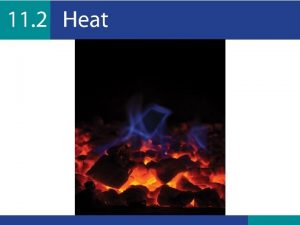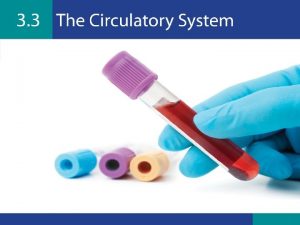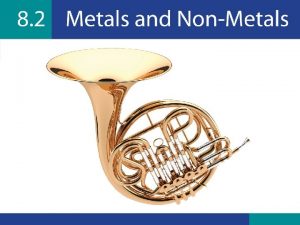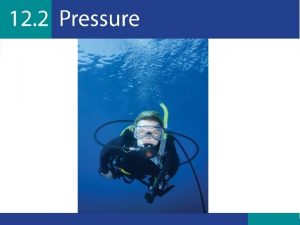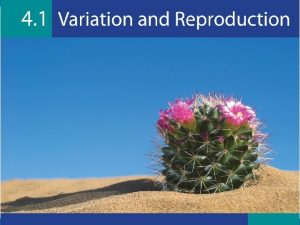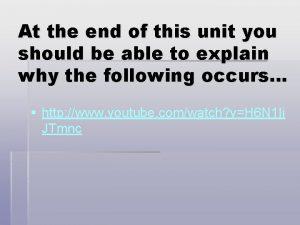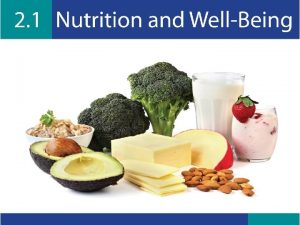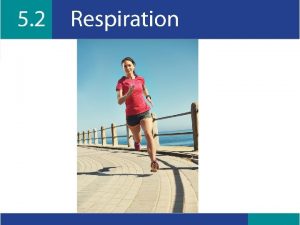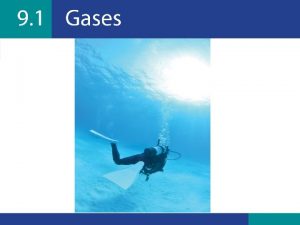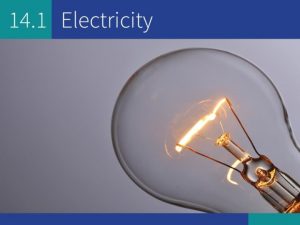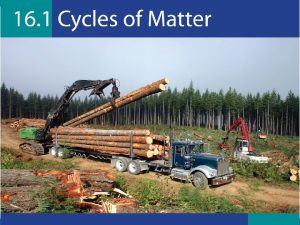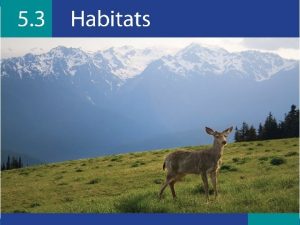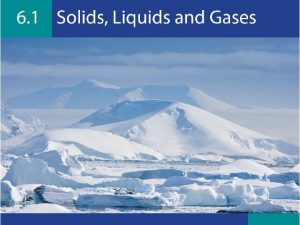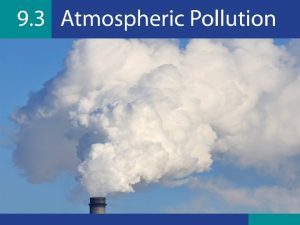At the end of this unit you should
























































- Slides: 56


At the end of this unit you should: 1. Be able to list the parts of the circulatory system. 2. Be able to describe the functions of the blood and what the blood contains. 3. Know the functions of the parts of the blood. 4. Be able to explain the function of the heart and its interaction with the rest of the body systems. 5. Be able to identify the structures of the heart. 6. Be able to explain the directions of blood flow around the body. 7. Understand the positive effects of exercise on the heart. 8. Know what a pulse is and how to measure it. 9. Know that certain factors can affect the workings of the circulatory system.

aorta circulation platelets artery clotting pulmonary atrium haemoglobin pulse blood heart red blood cell bone marrow infection septum capillaries oxygen vein carbon dioxide phlebotomist vena cava cardiac plasma ventricle white blood cell

LIGHTBULB QUESTION Approximately five litres.

What is the Circulatory System? The circulatory system is a transport system. It includes: • The blood vessels (arteries, veins and capillaries) • The heart These parts of the system all work together to transport substances such as nutrients and oxygen to the body’s cells. The cells then use these to release energy through respiration. The bloodstream also transports the products and waste away from the cells. Respiration: The release of energy from food through the intake of oxygen, and the release of carbon dioxide.

COMPONENTS OF BLOOD


(a) The nutrients released from digestion need to reach the body cells. What process in the body allows this to happen? Absorption; nutrients are then transported in the blood around the body.

(b) How does the oxygen taken in by the lungs reach a body cell? Oxygen reaches body cells via haemoglobin in red blood cells.

(c) Name three types of blood vessel. Arteries, veins and capillaries.

(d) Briefly outline what blood is and the functions of blood. Blood is a tissue, carried by the vessels. It is pumped all around the body. It has a liquid part called plasma and contains red blood cells, white blood cells and platelets. The functions of blood are to transport substances, protect against infection and keep the body temperature at approximately 37 degrees.

(e) Using a graduated cylinder and water, measure out five litres to give an indication of how much blood is flowing around the body. Did you think you would have more or less blood flowing around your body than the amount that is in front of you now?

(a) A phlebotomist is a person who is trained to take blood from a patient. List what would be found in a typical blood sample. Examples: plasma, red blood cells and white blood cells, platelets, nutrients, hormones, enzymes, salts, carbon dioxide and oxygen.

(b) How do red blood cells transport oxygen around the body? Oxygen is transported via a red pigment called haemoglobin.

(c) What is the function of a white blood cell? White blood cells protect against infection and make antibodies.

(d) When you cut yourself, a scab forms on your skin to stop the bleeding. Can you suggest what a scab is made of and why it is important that they form? A scab is made of platelets. It is important that they form as the scab stops blood leaving the body.

(e) Name four substances that are transported around the body in the plasma of the blood. Any of the following: nutrients, white blood cells, red blood cells, platelets, hormones, carbon dioxide, enzymes, salts or urea.

LIGHTBULB QUESTION Any of the following points are valid: • The capillaries connect the arteries and veins together as veins and arteries are different in size and would not allow blood to flow from one to the other. • The walls of the vessels need to be of different thickness as they have different jobs to do. • The blood flows at different speeds – slow and fast – and under different pressure – high or low – and therefore the vessels would not be able to directly link together.

(a) Describe the job that each blood vessel carries out. Arteries: Carry oxygen-rich blood quickly away from the heart around the body (with the exception of the pulmonary artery, which carries blood low in oxygen to the lungs). or Transports blood with oxygen from the lungs to the heart to be pumped around the body.

(a) Describe the job that each blood vessel carries out. Capillaries: Surround each organ, and supply tissues and cells with a blood flow. Connect arteries and veins.

(a) Describe the job that each blood vessel carries out. Veins: Carry blood containing carbon dioxide away from cells to the heart (with the exception of the pulmonary vein, which carries blood high in oxygen to the heart). or Transport blood with carbon dioxide from body cells and bring it to the heart to be expelled from the body by the lungs.

(b) Compare the pressure on the walls of an artery and that on a vein. The artery has high pressure as blood is flowing fast. The veins have little pressure as blood is flowing slowly.

(c) Name the molecules that the artery and the vein carry. Arteries carry oxygen. Veins carry carbon dioxide. Both carry nutrients, hormones, enzymes and blood cells.

(d) Why do capillaries have thin walls? Capillaries have thin walls to allow certain substances to pass across them into the body’s cells.

THE AMAZING HEART

THE AMAZING HEART


(a) What is the muscle of the heart called? The cardiac muscle. (b) The heart is a pump. What is its function? To pump blood around the body so the body’s cells can carry out respiration. (c) What protects the heart in your body? The ribcage.

(d) Which organ controls the heart? The brain. (e) List the four chambers of the heart. Left and right atrium, left and right ventricle.

(f) The right side of the heart carries blood rich in what? Carbon dioxide. (g) The left side of the heart carries blood rich in what? Oxygen.

(a) The blood coming from the lungs contains lots of what molecule? Oxygen. (b) What are the two reasons the blood leaves the heart and goes to the lungs? 1. So that carbon dioxide can be breathed out. 2. So that the cells in the lung tissue receive nutrients to in turn release energy.

(c) Using the information from Fig. 03. 08 on blood flow, copy Fig. 03. 09 and fill in the labels.


(d) With the information you have learned about the blood flow within the circulatory system, write a story or comic strip on the following: • You are an oxygen molecule that has just entered the lungs. Describe your journey around the circulatory system. In your answer you should address the following points: Oxygen travels from the lungs over the capillaries in haemoglobin found in red blood cells. It then travels to the left atrium of the heart through the pulmonary vein. From here it is pushed down through the valves when they open and into the bottom chamber, the ventricle. Then it travels up and out of the heart through the aorta. From here it travels very fast across the capillaries into the body cells.

Investigation 03. 01: How exercise affects your body Equipment: An area to exercise, a stopwatch. Instructions: Plan and carry out an investigation on how exercise can directly affect your body. Present your results both in a table and on a graph.

1. Will exercise directly affect your body? Support your answer with an explanation. Yes, it will increase the flow of blood around the body as the muscles that are working now urgently need more oxygen and nutrients to release energy so they can continue working.

2. Do you think there will be a pattern in your results? Yes, as after exercise it will be high and then it will decrease/fall the longer the rest period. 3. Suggest a scientific explanation for the pattern. Exercise increases pulse rate as the blood flow around the body increases under the new demands made by the muscles.

4. Make a recommendation on how you could refine or extend your investigation if it were to be repeated. Repeat the investigation in the next class period using the same exercise and compare your results. or Repeat investigation but using body heart rate monitors and record rate during exercise. or Repeat but complete a different exercise and compare results to see if different types of exercise will have different effects on the body.

5. The heart can beat up to 150– 200 times per minute during intense exercise. Why do you think the average person’s heart could not withstand this heart rate all the time? People who carry out intense exercise are athletes who train and therefore their heart will be more accustomed to pumping blood at a high speed. The average person’s heart would not be able to do this.

(a) Examine Aidan’s lifestyle. List the factors that you think would affect the health of his heart. Factors that may affect the health of his heart: • Stress • Diet is poor - high intake of sugar and salt; low intake of fruit and veg • Smoking • Lack of exercise

(b) Explain how each factor might affect his heart. You could present your answers as a table, using these headings: • Factors affecting the heart • Explanation FACTOR EXPLANATION • These foods may increase cholesterol levels, which Eating will block the vessels and so reduce the flow of processed/fast food blood • Processed food contains high levels of salt, which will result in raising blood pressure Adding extra salt to • Salt raises blood pressure, which puts a strain on food the heart

(b) Explain how each factor might affect his heart. You could present your answers as a table, using these headings: • Factors affecting the heart • Explanation FACTOR Smoking EXPLANATION • Amount of oxygen that travels across into the body cells is reduced Lack of exercise • The heart muscle will not be as strong as it could be • Excess weight will put a strain on the body’s joints and on the heart muscle

Copy and Complete In this unit I learned that the heart is part of the circulatory system and is responsible for pumping blood around the body. It is made up of cardiac muscle that never stops working. In the circulatory system there are three main blood vessels that work with the heart to transport blood around the body. These arteries, veins and capillaries. The arteries are responsible for carrying blood away from the heart. The veins carry blood to the heart and the capillaries connect the arteries and the veins. The arteries have thick walls. Veins have valves that prevent the backflow of blood. The heart has four chambers. The two at the top are called atrium and the two at the bottom are called ventricles.

Copy and Complete The wall that separates the two sides of the heart is called the septum. The job of the blood is to transport substances around the body to the body cells. There are two pathways that the blood can take. The first one is where blood is pumped from the lungs to the heart to the body cells. Here the blood is rich in oxygen as the body cells need it to make energy. The second pathway is where the blood travels from the cells to the heart and then to the lungs. Here the blood is rich in carbon dioxide.

1. Using labelled diagrams, explain the parts of the circulatory system. Diagrams of the heart, arteries, veins and capillaries. Labels added to the heart, lumen and walls of the vessels, valves to the vein.

2. Explain why our body needs a circulatory system. Our body needs a circulatory system to transport the essential oxygen, carbon dioxide, nutrients, hormones and enzymes to and from body cells.

3. Copy and complete Table 03. 04 by matching each function with the correct part of the blood. PARTS OF THE BLOOD FUNCTIONS A White blood cell 1 Helps clot the blood A 3 B Plasma 2 Carries nutrients from the digestive system and other substances around the body B 2 C Red blood cell 3 Produces antibodies C 4 D Platelets 4 Transports oxygen around the body D 1

4. Haemoglobin is the red pigment in red blood cells. Iron is the mineral that is essential in maintaining healthy levels of haemoglobin. What is the haemoglobin responsible for? It allows the oxygen to attach to it and then transports it around the body.

5. ‘A capillary is a vessel with specialised cells. ’ Recalling information in Unit 1. 1, suggest why this statement is true. The cells found in capillaries have a specific job to do, which is why its cells are specialised.

6. Copy and complete Table 03. 05 as instructed. BLOOD VESSEL Draw a diagram of each vessel ARTERY As in Table 03. 02 VEIN As in Table 03. 02 CAPILLARY As in Table 03. 02 Lumen: large Lumen: small Valves: none Valves: present Valves: none Walls: thick Walls: thin Walls: very thin Blood flow carried under low pressure Connect arteries to veins Describe the features Lumen: small Substances flowing in Blood flow vessels carried under high pressure Carry blood with a high amount of a high amount oxygen of carbon dioxide

7. What is the purpose of the valves in a vein? Valves prevent the backflow of blood in veins.

8. Compare what is in the blood after it leaves the heart and when it returns to the heart. After it leaves the heart, blood contains a high amount of oxygen and a low amount of carbon dioxide. When it returns to the heart it contains a low amount of oxygen and a high amount of carbon dioxide.

9. If the blood did not contain platelets, what would happen when you cut yourself? The blood would continue flowing from the body, which would eventually lead to death.

10. Suggest what might happen if blood did not contain white blood cells. We would not be able to fight infection, which would lead to the body systems failing to work properly, which would eventually lead to death.

11. Explain each of the following statements. (i) Our pulse increases when we exercise. The blood flow around the body increases as the muscles’ demand urgency for oxygen and removal of carbon dioxide increases. (ii) Smoking affects the heart. Poisonous gases in the cigarettes cross over into the cells instead of oxygen molecules, which reduces the ability of the cells to release energy and therefore affects the organ. (iii) High-cholesterol foods are bad for us. Vessels become blocked, which means the blood is not able to flow through them easily or under the correct pressure.

12. Sketch this diagram of the heart and name the parts labelled 1– 12. 1 = Aorta 2 = Pulmonary vein 3 = Left atrium 4 = Valves 5 = Left ventricle 6 = Septum 7 = Right ventricle 8 = Valves 9 = Right atrium 10 = Vena cava 11 = Valves 12 = Pulmonary artery
 When you are being passed you should
When you are being passed you should 1. the space between traffic clusters is called a(n)
1. the space between traffic clusters is called a(n) Lash lengtheners that contain fibers
Lash lengtheners that contain fibers What decreases stroke volume
What decreases stroke volume Preload stroke volume
Preload stroke volume Front end of compiler
Front end of compiler Front end and back end of a compiler
Front end and back end of a compiler Kolondivertikulose definition
Kolondivertikulose definition End-to-end wireframe parsing
End-to-end wireframe parsing End to end argument
End to end argument End to end accounting life cycle tasks
End to end accounting life cycle tasks End to end delay
End to end delay End to end delay
End to end delay End to end
End to end Comet knowledge graph
Comet knowledge graph Multiple procurement cycles
Multiple procurement cycles Unit 6 review questions
Unit 6 review questions Hình ảnh bộ gõ cơ thể búng tay
Hình ảnh bộ gõ cơ thể búng tay Bổ thể
Bổ thể Tỉ lệ cơ thể trẻ em
Tỉ lệ cơ thể trẻ em Gấu đi như thế nào
Gấu đi như thế nào Chụp tư thế worms-breton
Chụp tư thế worms-breton Hát lên người ơi
Hát lên người ơi Các môn thể thao bắt đầu bằng từ đua
Các môn thể thao bắt đầu bằng từ đua Thế nào là hệ số cao nhất
Thế nào là hệ số cao nhất Các châu lục và đại dương trên thế giới
Các châu lục và đại dương trên thế giới Công của trọng lực
Công của trọng lực Trời xanh đây là của chúng ta thể thơ
Trời xanh đây là của chúng ta thể thơ Cách giải mật thư tọa độ
Cách giải mật thư tọa độ 101012 bằng
101012 bằng Phản ứng thế ankan
Phản ứng thế ankan Các châu lục và đại dương trên thế giới
Các châu lục và đại dương trên thế giới Thơ thất ngôn tứ tuyệt đường luật
Thơ thất ngôn tứ tuyệt đường luật Quá trình desamine hóa có thể tạo ra
Quá trình desamine hóa có thể tạo ra Một số thể thơ truyền thống
Một số thể thơ truyền thống Cái miệng xinh xinh thế chỉ nói điều hay thôi
Cái miệng xinh xinh thế chỉ nói điều hay thôi Vẽ hình chiếu vuông góc của vật thể sau
Vẽ hình chiếu vuông góc của vật thể sau Nguyên nhân của sự mỏi cơ sinh 8
Nguyên nhân của sự mỏi cơ sinh 8 đặc điểm cơ thể của người tối cổ
đặc điểm cơ thể của người tối cổ Thế nào là giọng cùng tên? *
Thế nào là giọng cùng tên? * Vẽ hình chiếu đứng bằng cạnh của vật thể
Vẽ hình chiếu đứng bằng cạnh của vật thể Tia chieu sa te
Tia chieu sa te Thẻ vin
Thẻ vin đại từ thay thế
đại từ thay thế điện thế nghỉ
điện thế nghỉ Tư thế ngồi viết
Tư thế ngồi viết Diễn thế sinh thái là
Diễn thế sinh thái là Các loại đột biến cấu trúc nhiễm sắc thể
Các loại đột biến cấu trúc nhiễm sắc thể Số nguyên là gì
Số nguyên là gì Tư thế ngồi viết
Tư thế ngồi viết Lời thề hippocrates
Lời thề hippocrates Thiếu nhi thế giới liên hoan
Thiếu nhi thế giới liên hoan ưu thế lai là gì
ưu thế lai là gì Hổ đẻ mỗi lứa mấy con
Hổ đẻ mỗi lứa mấy con Sự nuôi và dạy con của hổ
Sự nuôi và dạy con của hổ Hệ hô hấp
Hệ hô hấp
